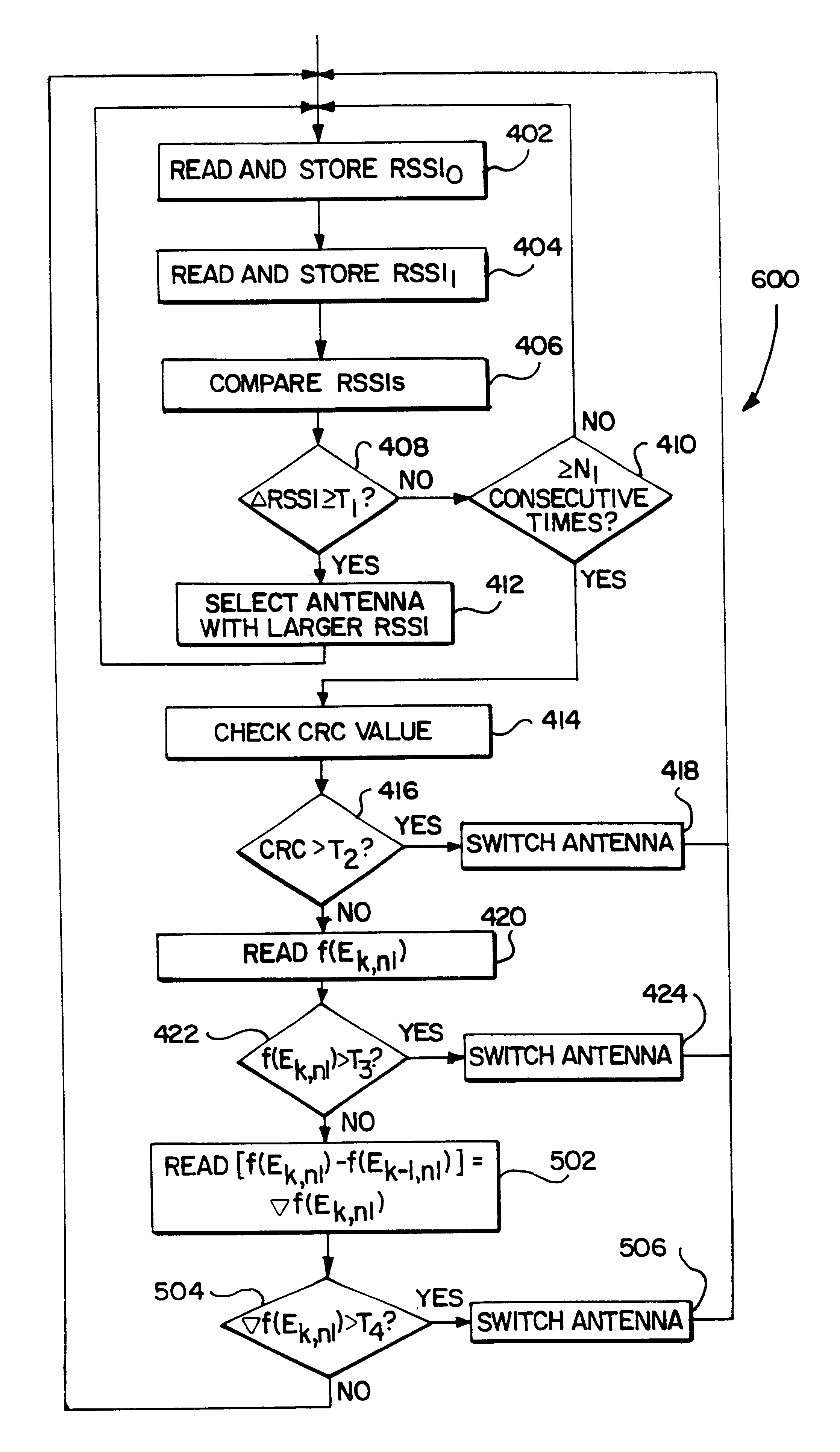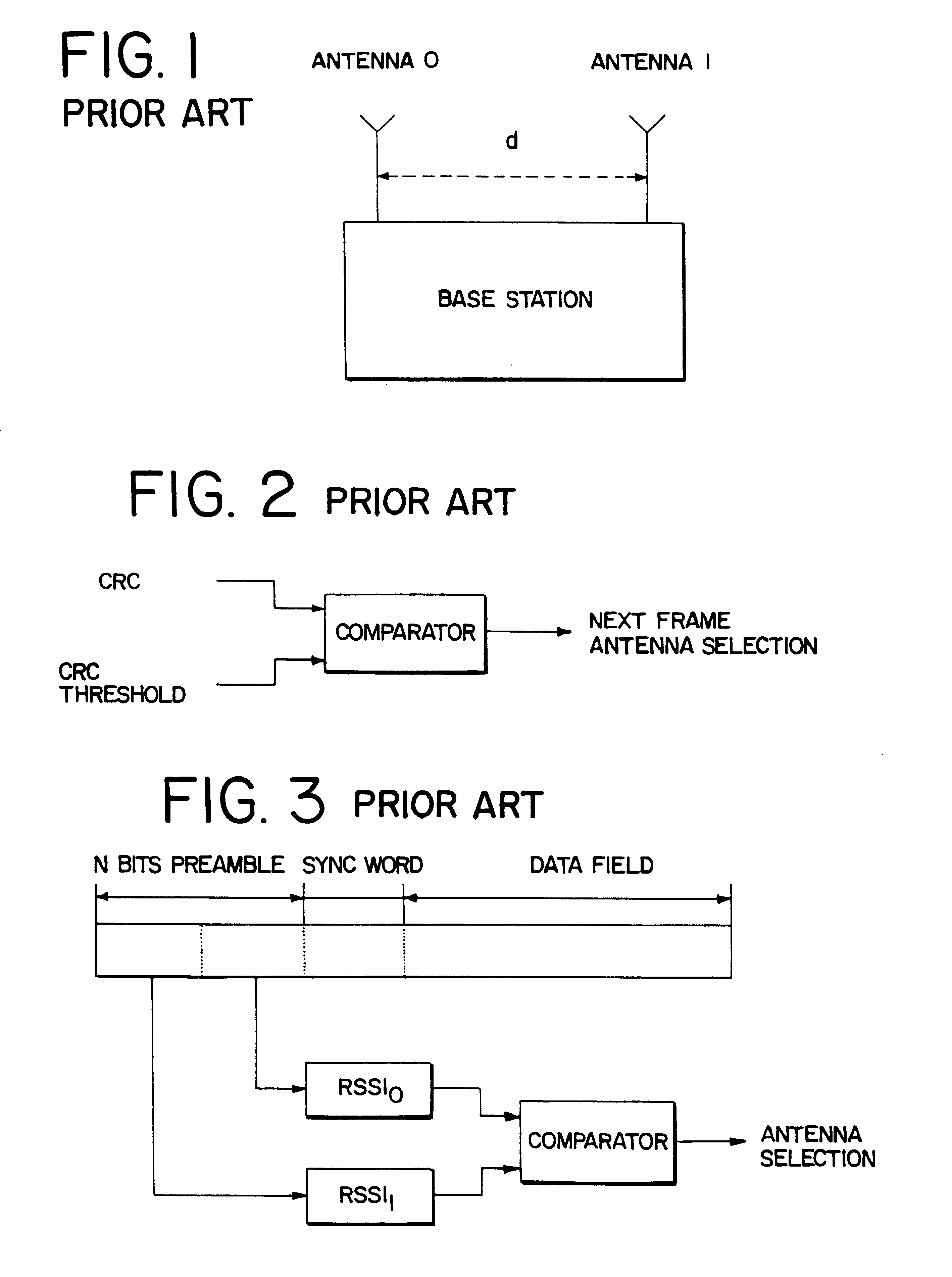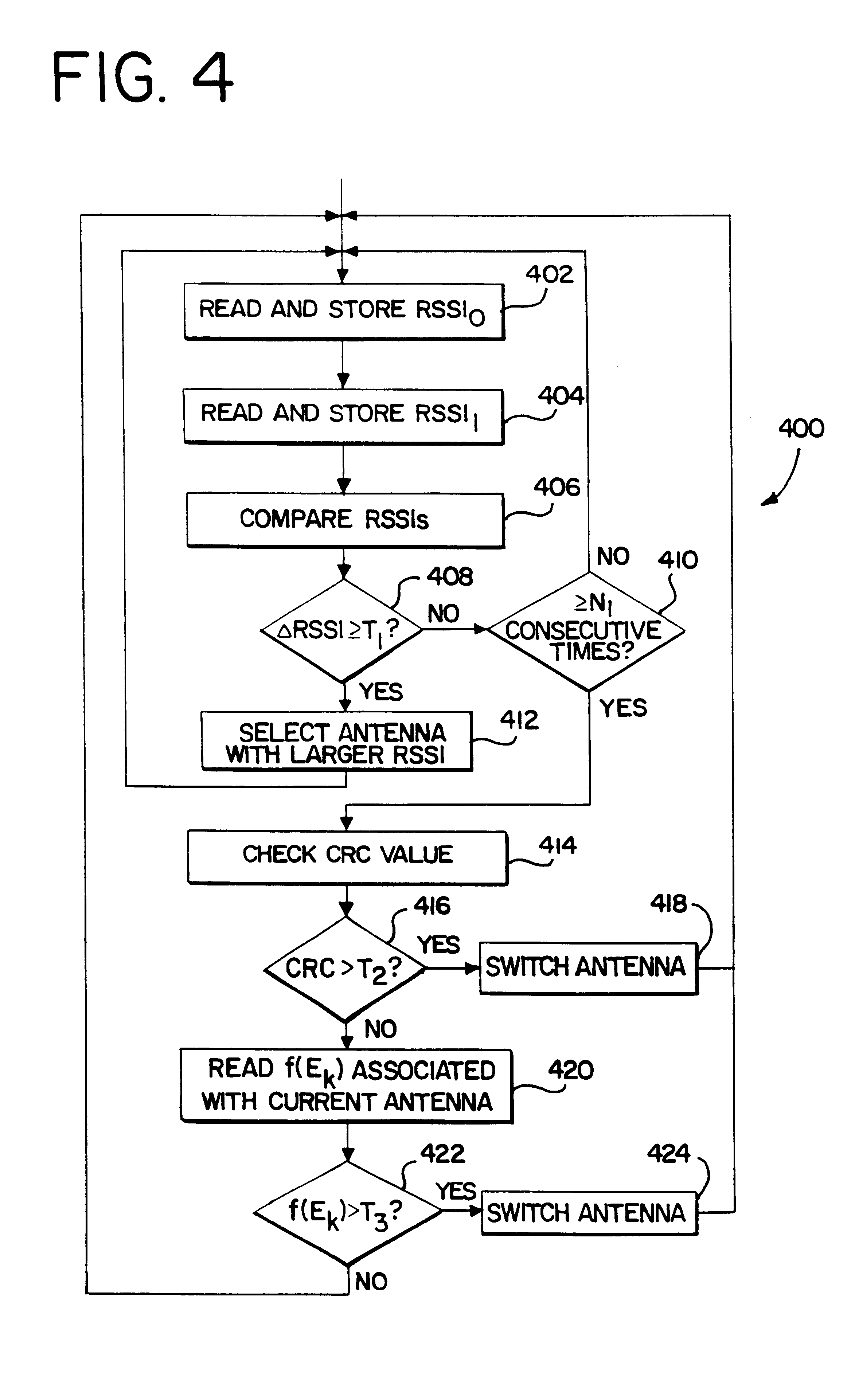Unified antenna diversity switching system for TDMA-based telephones
a technology of diversity switching and unified antennas, applied in diversity/multi-antenna systems, transmission monitoring, spatial transmit diversity, etc., can solve problems such as receiver squelching, drawbacks and disadvantages of known devices of both types, and the selection process is susceptible to errors, so as to improve the antenna selection process
- Summary
- Abstract
- Description
- Claims
- Application Information
AI Technical Summary
Benefits of technology
Problems solved by technology
Method used
Image
Examples
embodiments
The signal vector detection process used in a first embodiment focuses on phase modeling and phase prediction of broadcast signals for TDMA communication systems. In this process, a signal vector detection error or error vector Ek, n1 is calculated by subtracting an estimated signal vector ŝk, n1 from a reference signal vector sk, n1. (Ek, n1=sk, n1−ŝk, n1). A function, f(Ek, n1), is then calculated. In this embodiment, a sum (SUM) of the absolute value (ABS) of Ek, n1, is calculated (f(Ek, n1)=SUM(ABS Ek, n1)). However, other mathematical functions may be used. Since Ek, n1 is measured during the receiving process and is compared to a predetermined threshold, an antenna selection decision will not occur in real time as in a batch process. However, the signal detection process may also be based on a second criteria, a gradient error vector, ∇f(Ek, n1).
The term “gradient” as used in this specification is used to describe a vector that represents the magnitude of a signal's rate of ch...
PUM
 Login to View More
Login to View More Abstract
Description
Claims
Application Information
 Login to View More
Login to View More - R&D
- Intellectual Property
- Life Sciences
- Materials
- Tech Scout
- Unparalleled Data Quality
- Higher Quality Content
- 60% Fewer Hallucinations
Browse by: Latest US Patents, China's latest patents, Technical Efficacy Thesaurus, Application Domain, Technology Topic, Popular Technical Reports.
© 2025 PatSnap. All rights reserved.Legal|Privacy policy|Modern Slavery Act Transparency Statement|Sitemap|About US| Contact US: help@patsnap.com



